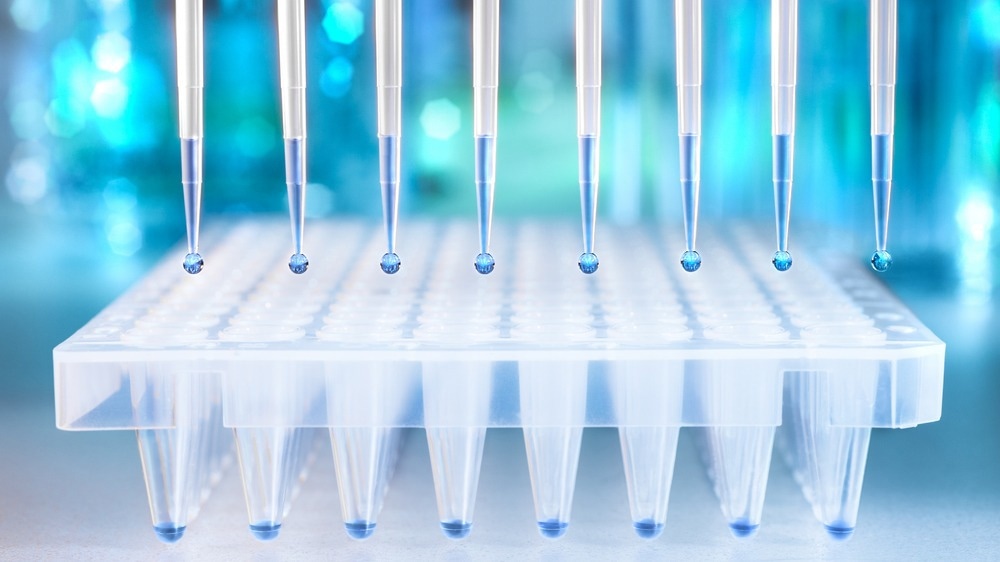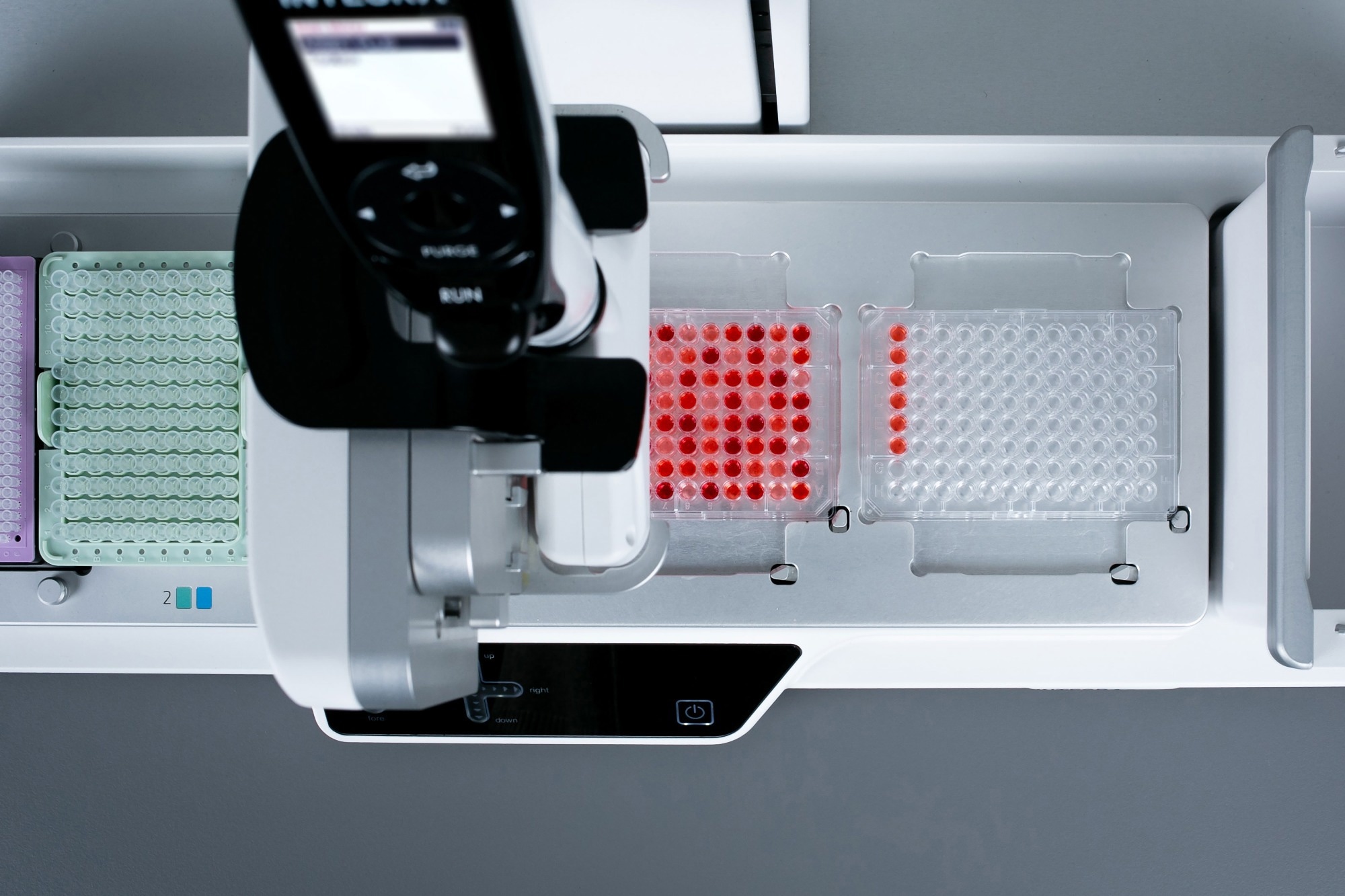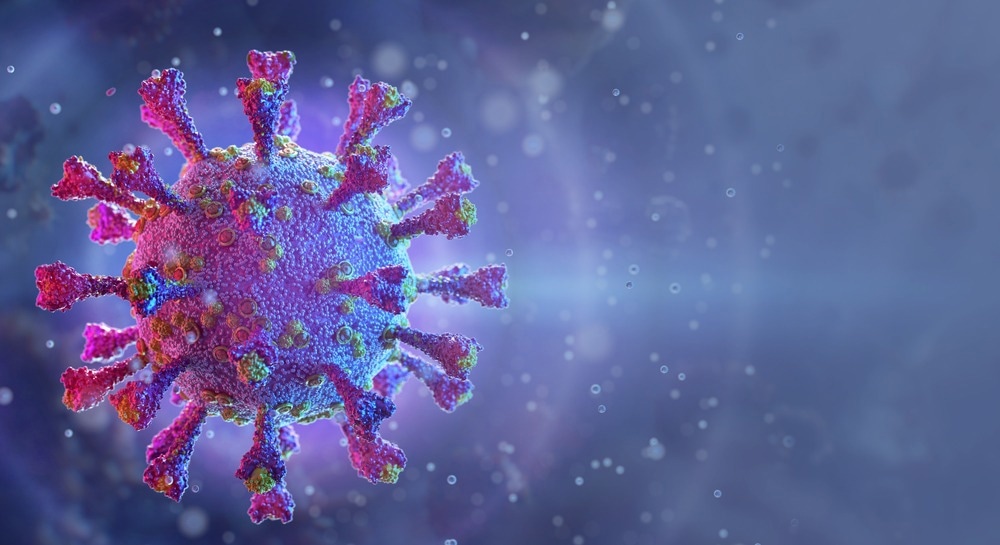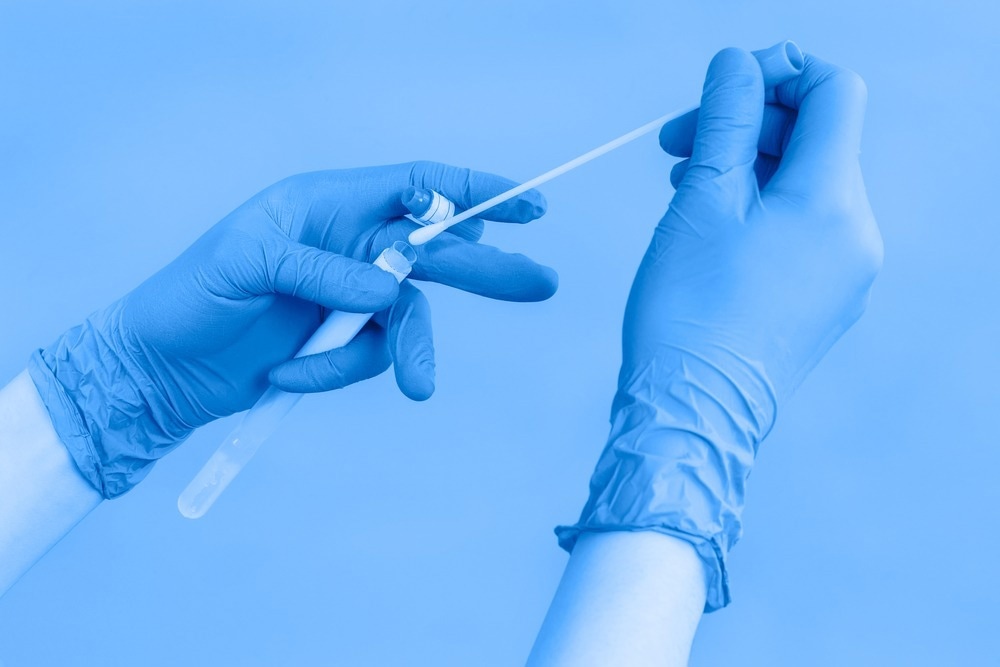In this interview, Stephanie Stursberg, Group Product Manager for pipetting platforms at INTEGRA Biosciences, talks to NewsMedical about the importance of accurate and efficient pipetting in biomedical laboratory work.
Why is accurate and efficient pipetting important in biomedical academic and industry laboratory work?
Pipetting errors are generally not recognized immediately but influence the end results, which means that whole experiments often need to be repeated. This wastes time and reagents and slows down the progress of vital research and development projects.
What are some challenges scientists face when routine pipetting?
Prolonged manual pipetting takes up precious time and can lead to repetitive strain injuries and loss of concentration. Ever-decreasing sample sizes have made it increasingly challenging to pipette without user errors when performed manually.

Image Credit: ShutterStock/tilialucida
What are some consequences of errors from inefficient pipetting?
Inefficient pipetting can lead to issues such as transcription errors, and generally inaccurate and inconsistent results, regardless of the application. This means that individual experiments may need to be repeated, or routine processing runs have to be started again, using up time and costly reagents and potentially delaying disease treatment and prevention advances.
Why is the automation of pipetting a valuable solution to manual pipetting challenges?
Pipetting automation increases throughput and accuracy and decreases the likelihood of manual errors. It also reduces manual strain for lab personnel and gives them more walk-away time to perform other vital tasks.
What examples of manual laboratory tasks can benefit from automated pipetting?
Any repetitive pipetting task – such as plate filling or sample distribution – can benefit from reduced hands-on time and increased accuracy using automation. In addition, using automated pipetting for serial dilutions helps to increase reproducibility.
What is the ASSIST PLUS pipetting robot?
The ASSIST PLUS pipetting robot is a platform that streamlines routine pipetting tasks at an affordable price. It has a pipette adapter that can accommodate any of the INTEGRA multichannel electronic pipettes and the D-ONE single-channel pipetting module. It has an intuitive user interface and a deck that can simultaneously accommodate up to five pieces of labware, with dedicated positions for automatic tip loading and ejection. All this is in a very compact footprint, so it can also be used in laminar flow cabinets.
Can you describe some of the advantages of this innovative robotic platform?
The system automates repetitive tasks and eliminates physical strain, providing superior reproducibility and ensuring error-free processing. The ASSIST PLUS does this by ensuring optimal tip immersion depths; consistent pipetting angle, controlled pipetting speeds; precise tip positioning in wells; and strict adherence to pipetting programs. This leads to superior pipetting results and workflow consistency while eliminating human errors such as skipping rows or wells.
What is the D-ONE single-channel pipetting module, and how does it fit with the ASSIST PLUS pipetting robot?
The D-ONE pipetting module is a single-channel add-on that can be mounted easily onto the ASSIST PLUS pipetting robot. It allows hands-free transfers from individual tubes or wells with only one channel.
Please can you provide some specifications of the D-ONE single-channel pipetting module?
It is available with a choice of two broad volume ranges, from 0.5 to 300 µl or 5 to 1250 µl, and uses air displacement pipetting technology. Each D-ONE single-channel pipetting module is compatible with two GRIPTIP sizes. The tip type is automatically chosen based on the transfer volume, allowing high precision throughout the full volume range. Both modules can detect the liquid level before aspiration and adopt the pipetting height accordingly.
What types of laboratory workflows is the D-ONE single-channel pipetting module ideal for?
Working with a single-channel pipetting module opens up unlimited applications in a lab and is the most flexible set-up of the pipetting robot. The D-ONE pipetting modules provide a broad volume range without changing the pipetting tool during a protocol. This makes it ideal for workflows with both high and low-volume pipetting steps, such as sample normalizations where usually high and low volumes of diluent samples are transferred.
How does automated liquid level detection by D-ONE help optimize pipetting results?
The D-ONE single-channel pipetting module offers automatic liquid level detection in real-time, ensuring aspiration at the right height. This capability eliminates air aspiration and overcomes the need to specify fill volumes for easier and faster program set-up.

D-ONE liquid level detection.
Image Credit: INTEGRA Biosciences
What capabilities does D-ONE have that enable it to accomplish even the most complex tasks, such as normalization, hit picking, and master mixing?
The module is designed to simplify tasks such as normalization, hit picking, and master mix preparation, freeing up time while eliminating transcription errors. For normalization, the D-ONE calculates the correct volumes of diluent needed for each sample to equalize the concentrations to one. It also effortlessly performs sample transfers from single wells to the target plate for hit or cherry-picking. The D-ONE can also mix individual components for master mix preparation ahead of PCR or other assays and carries out precise serial dilutions for standard curve preparation.

ASSIST-PLUS pipetting robot - D-ONE normalization.
Image Credit: INTEGRA Biosciences
Describe the benefits of the VIALAB pipette automation software for D-ONE.
VIALAB software offers a simple and intuitive graphical user interface, allowing you to create protocols with a few clicks without extensive programming knowledge. The software features dedicated programming steps, even for complex tasks like normalization and hit picking, allowing fast and easy set-up. For normalization, for example, a dilution calculator helps to determine the sample and diluent volumes required and automatically selects the best tip size to ensure high-precision pipetting results. Worklist files can be imported for hit or cherry-picking, allowing fast program set-up.
Many life science applications require fast and efficient sample transfer from plate to plate. How can this product help with these applications (i.e., cell culture, seeding, staining, drug testing, PCR, protein analysis, nucleic acid purification)?
Transferring samples between the same or different plate formats is a slow, tedious, and highly error-prone procedure when performed manually. INTEGRA's electronic pipettes allow precise and efficient transfer of multiple samples in parallel. Even from tubes to plates or different plate formats, the distance between the tips can be adjusted dynamically. As well as this, they can be automated on the ASSIST PLUS pipetting robot. ASSIST PLUS accommodates numerous labware types, from tubes to 384-well plates in landscape or portrait orientation. This platform significantly streamlines and speeds up the reformatting process, giving you a convenient walk-away protocol.
How does this automating technology help researchers obtain high-quality DNA samples for studies?
DNA extraction and purification, either with magnetic beads or silica-based columns, involve many liquid handling steps, which can be performed automatically on the ASSIST PLUS pipetting robot. Manual interventions are limited, and instructions for these steps are provided on the pipette's bright screen, ensuring the user does not lose track of the process.

Image Credit: ShutterStock/Billion Photos
This platform eliminates the possibility of manual pipetting errors and increases reproducibility, providing high-quality DNA samples for multiple downstream applications, including PCR, Southern blotting, genotyping, NGS, or enzymatic reactions. The DNA extraction protocol is a single VIALAB program, and users can customize any step. Validation data from previous studies show that high-quality, highly pure genomic DNA can be obtained by automating DNA extraction and purification on the ASSIST PLUS robot.
Please can you describe how the purification of plasmid DNA benefits from automated pipetting?
The ASSIST PLUS pipetting robot can automate the pipetting steps of the plasmid DNA purification protocols by using 96 well plates with silica membranes with a vacuum manifold directly on the pipetting robot. This guarantees accurate and reproducible liquid handling. Automated pipetting is ideal for high throughput isolation of plasmid DNA, as it offers more hands-free time for the user and increases reproducibility. 96 samples can be purified in less than 45 minutes by processing 12 samples in parallel, providing users with an easy and efficient way to extract and purify plasmid DNA with minimal hands-on time.
The D-ONE and ASSIST PLUS can increase efficiency and throughput for testing samples of infectious agents. Why is this important for disease research?
In molecular diagnostics, PCR is used to detect pathogens in samples. The PCR set-up with the D-ONE allows for faster multi-well pipetting, resulting in an increased laboratory throughput and accelerating the discovery of diagnostic methods and disease treatments. For example, the New Hampshire Public Health Laboratories (NHPHL) implemented the ASSIST PLUS to automate sample processing and nucleic acid transfer for CDC Influenza SARS-CoV-2 RT-PCR multiplex assays. This platform helped the lab to cope with the dramatic increase in workload during the pandemic and to stay on top of urgent testing throughout this turbulent time.

Image Credit: ShutterStock/Billion Photos
The NHPHL also trialed the D-ONE module when it was first released and found that it allowed for robust and reliable automated influenza/SARS-CoV-2 master mix preparation and PCR plate set-up. The automated process demonstrated 100 percent accuracy and freed up technicians to perform other tasks – reducing total hands-on time by 27 percent – and minimizing the risk of pipetting errors. As well as this, the ASSIST PLUS can be used in a biosafety cabinet due to its compact design, enhancing user safety by limiting exposure to contaminants when handling infectious agents.
How can simple, efficient pipetting improve the quality of PCR experiments?
PCR is a vital tool for detecting pathogens and an essential technique in genotyping or NGS library preparation. The assay's success mainly depends on the user's ability to perform highly accurate and precise pipetting. Automation, such as with the ASSIST PLUS pipetting robot, ensures consistent pipetting steps, as it minimizes the variation between individuals and eliminates the risk of reformatting errors. This consistency improves the quality and reliability of PCR experiments, reducing the need to rerun entire assays and giving users confidence in their results.

Image Credit: ShutterStock/Trofimchuk Vladimir
Why is more walk-away time ideal in meticulous lab procedures for biomedical research, such as minimum inhibitory concentrations (MIC) testing in antibiotics development?
Laboratories are under increasing pressure and are experiencing ever-growing workloads, leading to lapses in concentration, repetitive strain injuries, and staff burnout. MIC testing involves serial dilutions in plates, challenging with manual multichannel pipettes. Automated, walk-away pipetting for routine tasks, such as within MIC testing, frees up lab personnel to perform other essential jobs in the lab, increasing their overall productivity. It also ensures consistent and reliable processing for superior reproducibility and high-quality results, enabling rapid and accurate determination of MICs.
Where can readers find more information?
To learn more about the ASSIST PLUS pipetting robot and D-ONE single-channel pipetting module, visit www.integra-biosciences.com/pipetting-robots/assist-plus
About Stephanie Stursberg
Stephanie Stursberg is Group Product Manager for pipetting platforms at INTEGRA Biosciences. She holds a master's degree in Molecular Biology and gained a broad knowledge of lab applications in diagnostics. Having worked with pipetting robots herself and helped other users set up automation workflows, she is convinced of the advantages of automating lab processes and thinks everyone in any lab should benefit from them. That's why she chose to join INTEGRA Biosciences, where she can use her experience to shape lab automation systems that will ease the lives of scientists everywhere.
About INTEGRA Biosciences
INTEGRA is a leading provider of high-quality laboratory tools and consumables for liquid handling and media preparation. We are committed to fulfilling the needs of laboratory professionals in research, diagnostics, and quality control within the life sciences industry.
Our globally recognized products include EVOLVE manual pipettes, VIAFLO, VOYAGER, MINI 96 and VIAFLO 96/384 electronic pipettes, WELLJET reagent dispensers, PIPETBOY serologic pipettors, VACUSAFE and VACUSIP aspiration systems, DOSE IT peristaltic pumps, and MEDIACLAVE and MEDIAJET media preparation equipment. Visit www.integra-biosciences.com to see the full line of innovative products.
INTEGRA is headquartered in Zizers, Switzerland, and Hudson, NH, USA, maintaining direct sales organizations in the USA, Canada, China, Japan, UK, France, Germany, Austria, Sweden, Denmark and Switzerland and a worldwide network of over 100 highly trained international distribution partners.